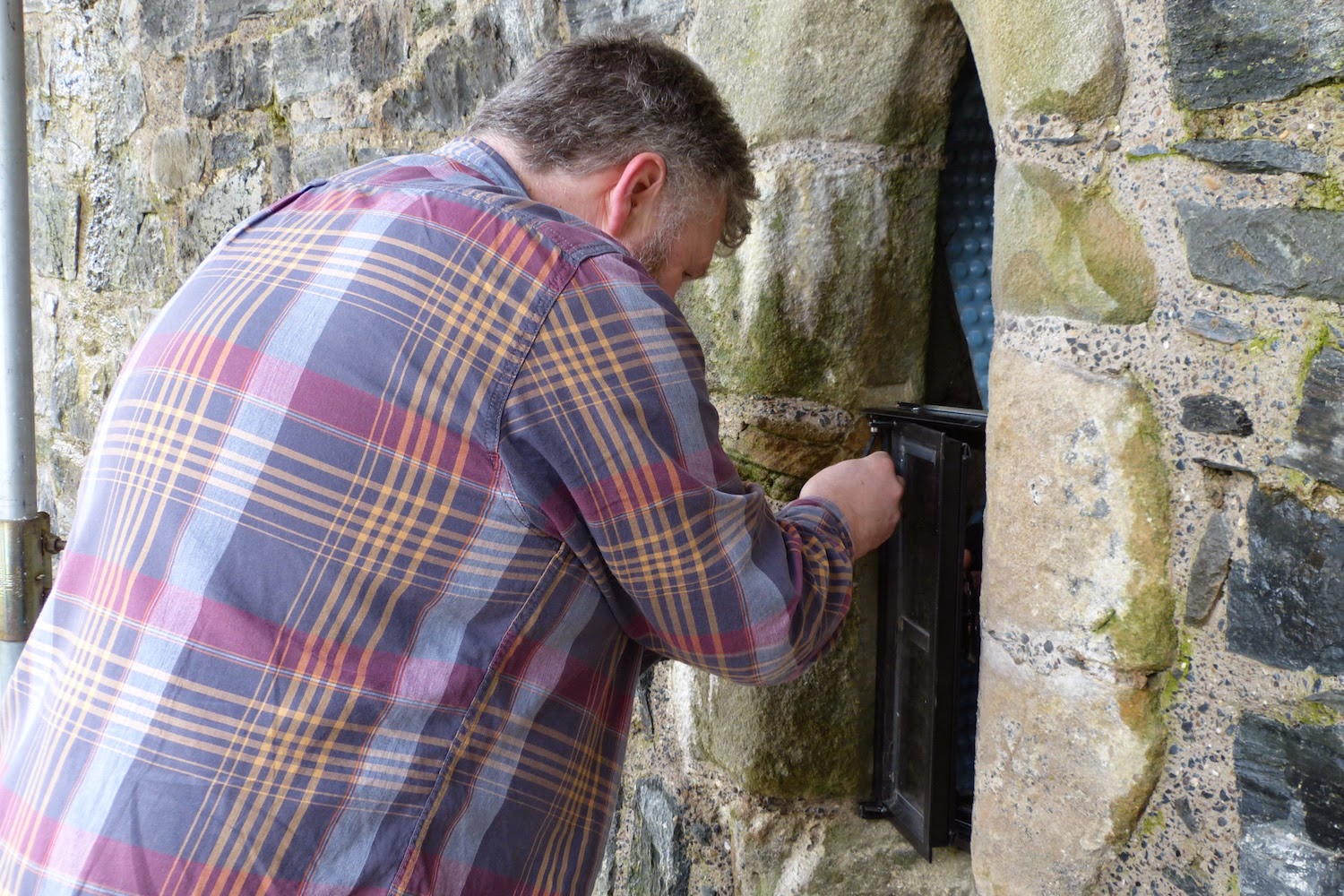They had already visited the site to measure up and prepare individual templates for each of the nine small windows which they were going to hand craft for the building. Today the windows started to go in, starting with the chapel's lancet window shown in the first picture.
This window has been divided into a lower, opening section and an upper, fixed section. The lower section has a steel frame, and a unique catch, the handle having had to be curled in upon itself because the unit is so small.
The frame is held in place by socket head grub screws, which effectively clamp it against the stonework. Since access to the exterior of these windows, once the scaffolding is dropped, is going to be extremely difficult, they're made of high quality stainless steel, which will require minimum maintenance. It also won't rust - many windows become jammed in place by rust - so, if they do have to be removed, they'll come out cleanly.
The hinge of the opening window is then screwed into place. There are two of these opening windows, the remainder being fixed. The latter includes some truly tiny ones which will cover the circular holes used to fire muskets through.
The upper, fixed section is then fitted. The glass, which is hand-blown, was made by English Antique Glass in Birmingham using traditional methods.
Small pieces of lead are jammed in around the upper unit to hold it firmly in place. The final stage will be to fill around the windows to make them airtight.
Dave Morris, left, is managing director of Design Glass and its sister company Touchstone. While his team, Alex Bottomley, centre, and Andy Mitchell, right, are here to fit the units, they're also involved in the manufacturing. Talking to these three was both a pleasure and a privilege, as they are so proud of, and committed to their work. Please visit Design Glass' website to see the sort of thing they do.
These Yorkshire lads don't hang around. They started work this afternoon, and all the units will be in by the end of tomorrow. In between, they'll be sampling another very stormy Ardnamurchan night.







It disappoints me somewhat that all of the craftsmen and materials are being brought from Yorkshire. It would have been nice to have seen more local contractors and materials used.
ReplyDeleteAbsolutely magnificent! Well done! Can't wait to come and see it.
ReplyDelete(Dennis and Margret MacPhail)
These windows look really well, particularly by being not obvious compared to others I have seen. Are they double glazed? I presume originally there would have been nothing in the windows but everything that reduces draughts must be very welcome.
ReplyDeleteAny thoughts on why you split the glazing appearance to look like small panes?
I have passed your comment to the architect, Francis Shaw, but an immediate answer is that all three ranges have been refurbished to look as they would have done around 1720, so there is no double glazing in any of the windows, including the sash windows along the front of the main, north range, and all glass has 'flaws' in it, as it would have done in those days. Jon
ReplyDeleteArchitect Francis Shaw adds, "The glazing that would have been fitted (and there was as there is an existing rebate) would have been blown glass and the technology at the time would only allowed very small sections of glass. Certainly this would have been glazed by the 15th century and would have looked as it does now. May have had smaller leaded sections but we didn't want it to look too folksy."
ReplyDelete